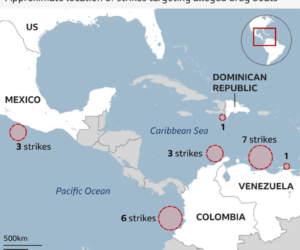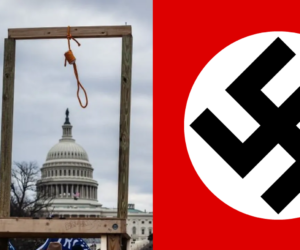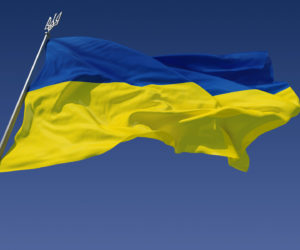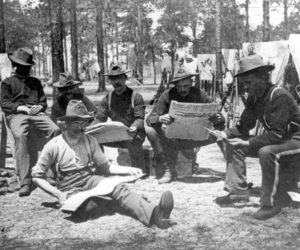Mid-week, The Washington Post reported that as of December 15, the Coast Guard would no longer consider the swastika and the noose as hate symbols. Instead, per a November 13 directive, they would be considered only “potentially divisive” speech.
The guidance also raised the threshold for disciplinary action by specifying that public displays of extremist symbols would constitute misconduct only if they could be shown to harm “good order and discipline, unit cohesion, command climate, morale or mission effectiveness.”
The policy “was updated in part to be consistent with similar Pentagon directives, according to a Coast Guard message announcing the changes.”
The policy change comes less than two months after Defense Secretary Pete Hegseth ordered a review of all the hazing, bullying and harassment definitions across the military, arguing that the policies were “overly broad” and they were “jeopardizing combat readiness, mission accomplishment, and trust in the organization.”
Both symbols have a long history of hate in America.
The German Nazi Party adopted the swastika as its symbol in 1920. It became synonymous with Nazism in the United States after war broke out in Europe. After World War II and the Holocaust, the swastika became a global symbol of Nazi genocide. Germany banned its display.
However, American neo-Nazi and white supremacist groups adopted the swastika as their symbol. In 2019, Coast Guard policy (under the first Trump Administration) positioned symbols like swastikas and nooses as “widely identified with oppression or hatred” and treated them like “a potential hate incident.”
It’s little wonder that the policy change was widely criticized and then quickly reversed.
“At a time when antisemitism is rising in the United States and around the world, relaxing policies aimed at fighting hate crimes not only sends the wrong message to the men and women of our Coast Guard, but it puts their safety at risk,” [Democratic Sen. Jacky Rosen of Nevada said]…
The newest policy is silent on whether Coast Guard personnel will be able to claim they were victims of hate incidents.
Media attention and statements criticizing the change focused on the swastika. They paid little attention to the noose, a uniquely American symbol of hate, particularly recalling the lynching of Black Americans.
During slavery, Whites routinely used hanging as a method to terrorize Black communities and deter resistance. During Reconstruction, the Ku Klux Klan (and other regional hate groups) used the noose as a warning symbol. The noose appeared at polling places (despite the 14th Amendment granting Black men the vote); vigilantes used it to terrorize neighborhoods. Its message was unmistakable: participate in political processes at your own risk.
From 1882 to 1968, vigilantes lynched 4,743 Americans, according to the NAACP.
The highest number of lynchings during that time period occurred in Mississippi, with 581 recorded. Georgia was second with 531, and Texas was third with 493.
However, it is impossible to know the exact number, and some historians believe this to be an undercount.
Lynchings were also often extrajudicial, public executions as Americans moved west. That’s why the noose on January 6, 2020, took on such significance.
We should not be surprised that a U.S. government entity was attempting to make nooses and swastikas more acceptable. Each expression of racism has its own history in America, but in 2025 they come together to advance the goal of creating an American ethno-state supported by ideologies of White supremacy and Christian nationalism—a state in which racialized voter suppression, mass detention and deportation, and Fascist-style population engineering schemes reshape American governance and society…
This setback for MAGA is heartening, but we must remain attentive to the ways each Nazi salute, each recall to the history of lynching, and each act of publicly performed racist violence by ICE agents contribute to the acceptance and normalization of authoritarian tactics. Bannon was given a platform by 60 Minutes and The Economist after his Nazi salute –as if that salute did not matter.
Let us resist that kind of normalization by responding to every evocation of the noose and the swastika with acts of anti-racist education and assistance to those who are targeted today. In doing so, we continue the work of the brave civil rights and anti-Fascist resisters who opposed authoritarian violence in America and abroad.
Some Republicans understand what the shadow of hate symbols, in particular the swastika, mean to Americans at large. For example, here’s Senator Lindsey Graham (R-SC), “I’m in the ‘Hitler sucks’ wing of the Republican Party.”
It is worthwhile to ask what Pentagon policy was the Coast Guard attempting to conform to? How has Hegseth changed what constitutes hate speech in the military?
And, as Ben-Ghiat implores us, remain vigilant and vocal.
Known for gnawing at complex questions like a terrier with a bone. Digital evangelist, writer, teacher. Transplanted Southerner; teach newbies to ride motorcycles. @kegill (Twitter and Mastodon.social); wiredpen.com

















